Naxos Villages and South Beach Bus Tour Ending with a Surprise!
This is our last day on Naxos. Tomorrow we head back to Santorini for a few days before flying home. Today we are going to be doing the ‘Villages and South West Beach’ tour. Both of the Excursions offered stops at places that I’d visited before. However, the one that I’d chosen was the only one with a beach destination which I thought would be a good balance of history, culture and well – beaches.
When I was on Naxos last the only operator to provide such tours was Zas tours located by the port. I did this day trip and enjoyed it immensely. Since then KTEL appear to have developed a new string to its bow by offering guided tours under the name of Naxos Bus Transfer. Competition is good and I’m keen to see if Naxos Bus Transfer can measure up. Their prices certainly do at 30€ per person I think this is a good price – even if it just means you aren’t crammed onto the bus and actually get to have your own seat.
https://www.naxosbustransfer.com/
Another advantage of this bus service is that it will pick us up at Lagos close to the hotel so we don’t have to head into Naxos town first. We are ready and waiting on the main road when the bus arrives. We are greeted by the driver and asked to take a seat. The bus picks up a few more people before heading to the bus station. We are joined there by our guide Stelios. He introduces himself and Yianis the bus driver and gives a quick overview of the tour and what to expect. Off we go.
Our first stop is the Kouros at Melanes. A Kouros is a representation of a standing young man, often naked and the examples on Naxos are made in the local marble. When I first saw the Kouros of Apollonia on my last trip, the first thing that struck me was the similarity to Egyptian statues I’d seen – both with their left foot forward. I remember my Egyptian guide telling me many years ago that it is always the left foot forward because the heart is also on the left. This symbolism represents stamping out evil so that the heart and goodness can flourish. I know there are other thoughts of reason on this idea. Apart from the left foot and also the clenched fists by the side, there are differences to the Greek and Egyptian statues. The Greek Kouros are often naked, the Egyptians are clothed. Also the Greek Kouros are often depicted with a very subtle smile said to represent good health and happiness and this is seen in many examples from the Archaic period of sculpture. What is interesting about the Kouros is that they weren’t statues of god’s or statesmen but a representation of the common man (or rather young man).
There are three Kouros on Naxos that were left in an unfinished state due to being damaged either during their creation or transportation process. The larger of the Kouros is in Apollonia and the remaining two in separate locations in the complex known as Flerio in Melanes. Today we are visiting the Kouros in Melanes also known as the Kouros of Flerio. Just for reference the other one is known as the Kouros of Potamia and/or Faranga and which still lies on the slopes of the quarry a short distance away from us.
From the coach it is a short walk to a tranquil shaded garden set in a rural landscape. What a beautiful resting place for this statue of beauty. Although the facial features aren’t clearly defined, the statue does have a look of contentment on his face. Maybe it’s the way that the dappled leaves cast shadows across his face but real or imagined, he is smiling.
The next stop on the itinerary is advertised as Kinidaros which is just north of the centre of the island. It isn’t a destination as such. The bus stops along the roadside where we get a view of the quarry from a distance. Although not a picturesque site it does give some context of where the marble is quarried and the distance to the resting places of the Kouroi. It is also interesting to see the contrasts in landscape between the quarry and the surrounding rural land.
Back on the bus we head slightly south to the village of Moni for Panagia Drosiani. This beautiful Byzantine Church, Stelios tells us is the oldest Church on the island and one of great historical significance. He tells us that it is said that the church was originally part of a Catholic Monastery complex. The name of the town Moni means Monastery. It is dated from between 4th and 6th century and was added to over many centuries later. However, at some point the church became buried in the landscape and was only re-discovered in the 1970’s.
The main body of the church is dated from around the 7th century and houses some outstanding frescoes.
Do forgive the GA’s. Either the church’s unique beauty has touched their soul (maybe possible for an atheist family) or they just couldn’t help themselves.
Our next destination is the mountain village of Filoti a short drive away. I haven’t been to Filoti for nearly 30 years. I remember the day well. My travelling companion and I had some notion that we would visit the Cave of Zeus. Anyway, it didn’t go well and will be the subject of another post at some point in the future. However, I remember the village. It is familiar and I get a sense of my bearings right away – though with one main road through it that isn’t difficult! There isn’t any time for reminiscing – we are ushered up the steps to the Church of Panagia Filotitissia or the Church of Holy Mary of Filoti.
Stelios tells gives us a brief history of this church. One of the benefits of an escorted tour is the knowledge that the guides come with and Stelios his stuff. There is a lovely story about this church and how, even in the times of Ottoman rule, the church complete with bell towers was able to be built. It was possible to build churches during the Ottoman occupation but not to build bell towers and/or ring bells.
The story goes along the lines of this. During the late 1600’s there was a storm just off the coast of Naxos. A local shepherd named George had spotted a ship out at sea struggling to get into safe harbour. The ship was battered and out of all the men on board, just ten people survived, amongst them a young boy. George offered to take the boy and look after him until he was recovered. His wife upon seeing that the boy was a Turk was none too pleased. George responded to her with a saying that goes like this “Do the good and throw it on the shore”.
The boy learnt Greek and in remembrance of the shipwreck was baptised and named Georgios Hussein. Some years later a military leader came to the island after a decree was issued from Constantinople, to take the boy back. Now a young, man he was returned to his native country.
In 1710, a group of elders in the village (of which George the Shepherd was one) deemed that a larger church was needed to serve the community. The area they had identified for the location of the church was in Lahanario right in the centre of the village. The only drawback was that the land was owned by the feudal lord Barotsi who refused them the permission.
The Filotites decided to start building the church anyway. Barotsi was enraged and brought the issue to the attention of the military leaders in Constantinople. Eventually the case went to court. By some strange coincidence, the court judge was non other than Georgios Hussein. The two men recognised each other instantly and the friendship was reignited. Of course the court case went the way of George the shepherd. Not only did Georgios Hussein play host to George the shepherd at his home, he gave him a decree that outlined the following:
• With the florins (gold coins) build the church with a big “kambanario” (bell tower)
https://naxos-filoti.gr/en/attractions-holy-mary-of-filoti/
• With this decree take as much land as you like
• With your “koumbouri” (handgun of the times), do some ceremonial shooting when you arrive at Naxos
• If a Turk ever harasses you, show him this decree.
On the marble bell tower of the church, Loumbas figure is engraved as well as the phrase “do the good and throw it on the shore”.
After leaving the church complex we are given a guided tour of the folklore museum next door.
We now have a 45 minutes to go off on our own and get something to eat. One thing I notice is that Filoti is busy. The taverna’s are full to the brim and even the traffic needs controlling by a rather irate policeman. We just have time to get a quick bite before heading back to the bus.
Once back on board we now set off for the little village of Damalas to visit the pottery and also the ancient olive press, both of which I’ve seen before but always worth another visit.
This really has been a whistle stop tour. If I could change anything it would be to have more time in Filoti but we are on a schedule and must stick to it.
We are now reaching the end of the tour which culminates in an hour or so at Pirgaki Beach. For those that don’t want the beach there is a taverna at the back of the beach with plenty of shade under broad branched trees. However, after this hot and exhausting day we all feel as though we need to refresh ourselves in the sea.
The beach is lovely – almost as deep as it is wide. There is a section in the middle that is sectioned off for sunbeds and parasols and the rest is all natural. Peter and I head over to the rocks where there is a little bit of shade and we swim. The GA’s do the same.
The time goes really quickly which is a shame because I’d like to have explored a little further. I did mention to Peter that we are quite close to the abandoned hotel that we had tried to reach several days earlier but we would never make it in the little time we had left. Again I resign myself to the fact that we won’t see it on this trip.
Everyone is back at the bus and we prepare to make our way back. As we set off Stelios asks us if we have enjoyed the tour of which there is a resounding ‘Yes!’. He then tells us that he has another little stopping off point for us. I immediately know what it is and I turn to Peter and grab his hand. ‘I know where we’re going’ I tell him. I was absolutely right. Stelios is taking us to the abandoned hotel to have a quick look at the graffiti art installation. I’m thrilled!
We literally have five minutes to jump off the bus, run around quickly to take a few photographs and to jump back on board the bus. I know that there is much more to what we had chance to see as I’ve seen many photographs of this place before. However, I’m happy to have seen the little bit that I have. What a wonderful surprise! Apologies if any images offend.
As we set off back to our nearest stop, Stelios begins to speak a small bit of prose to us. I can’t remember everything he says word for word but do manage to take a few notes.
“Filoxenia is part of who Greeks are. The stranger for the Greeks is sacred, welcomed and accepted. Homer wrote in the Odyssey “The Gods visit us disguised as strangers”. Music, dance, food and friendship are never very far away. These things are always shared. The traveller to Greece discovers these qualities at every turn. It is a rare combination of heart and mind. Simplicity, warmth and authenticity. Greece is a small piece of heaven on earth. This is Greece. Come and share it with us.
Perfection.
Later that evening we go for a meal at Trattoria in Agios Prokopios. The meal is average so we compensate by going a few doors down for ice cream.
Tomorrow we leave for Santorini

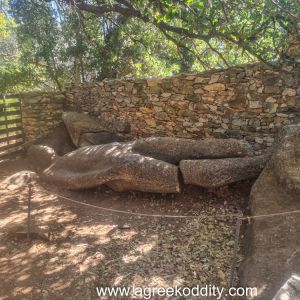


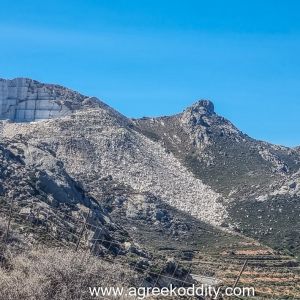
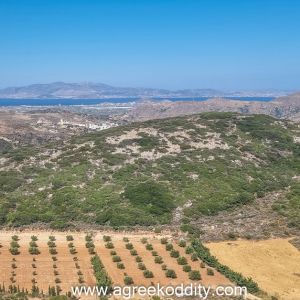
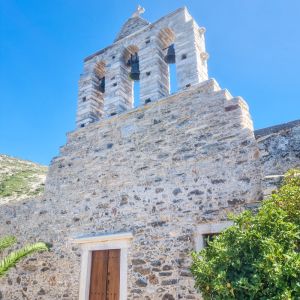


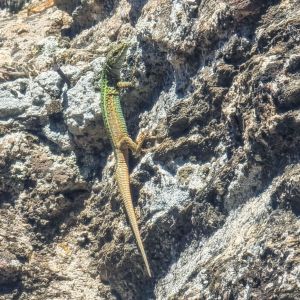
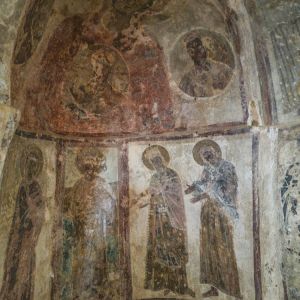
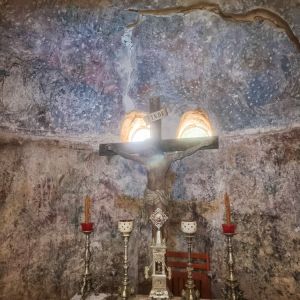

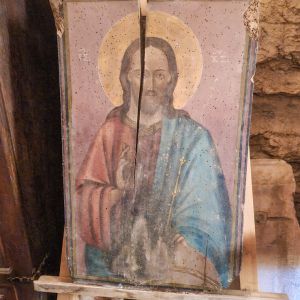
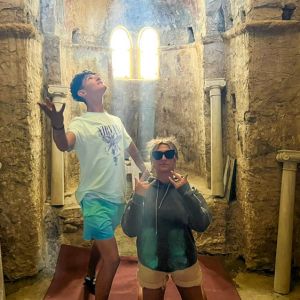
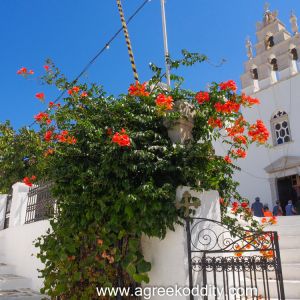
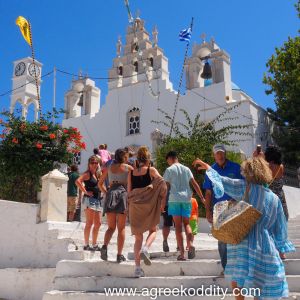

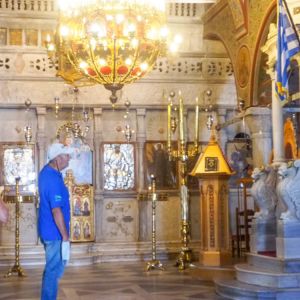
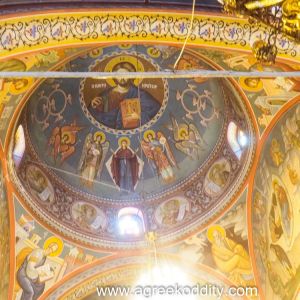

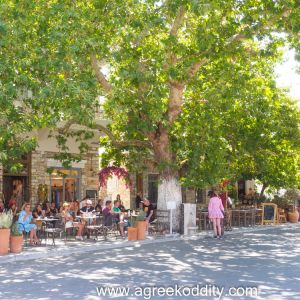
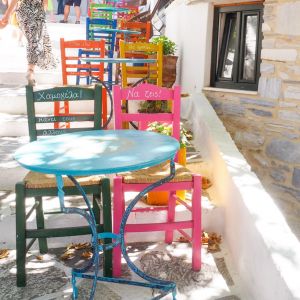

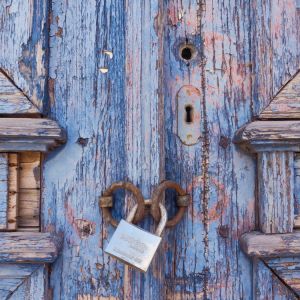


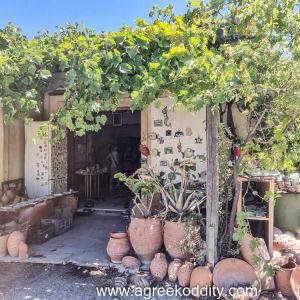


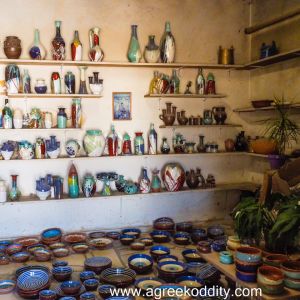
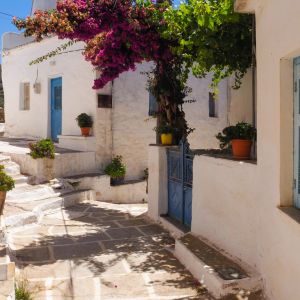
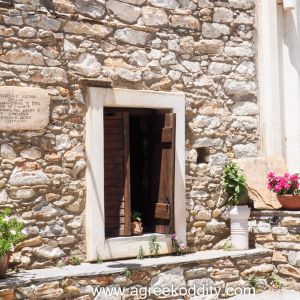




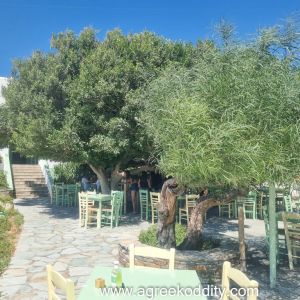


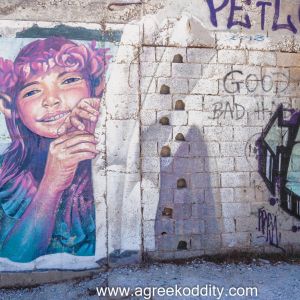


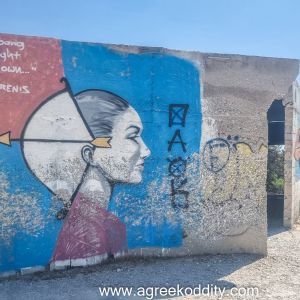
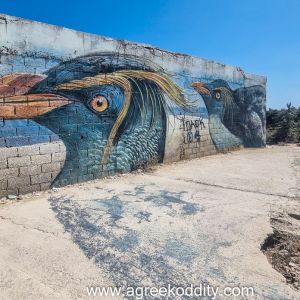
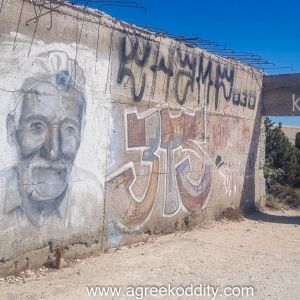
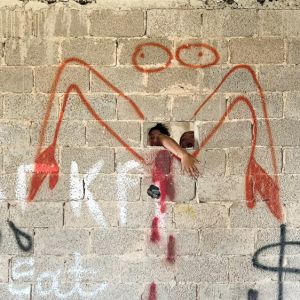

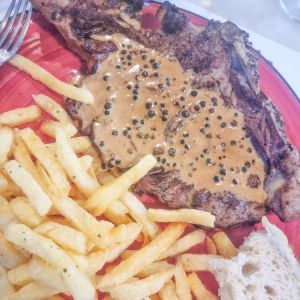









What an interesting tour Stephanie – I’d love to see the graffiti sometime !
Hi Liz. Yes this place was on my list for a while. There wasn’t a lot of time to explore it properly with the bus tour but out of season and with the regular bus service it would be better. 🙂